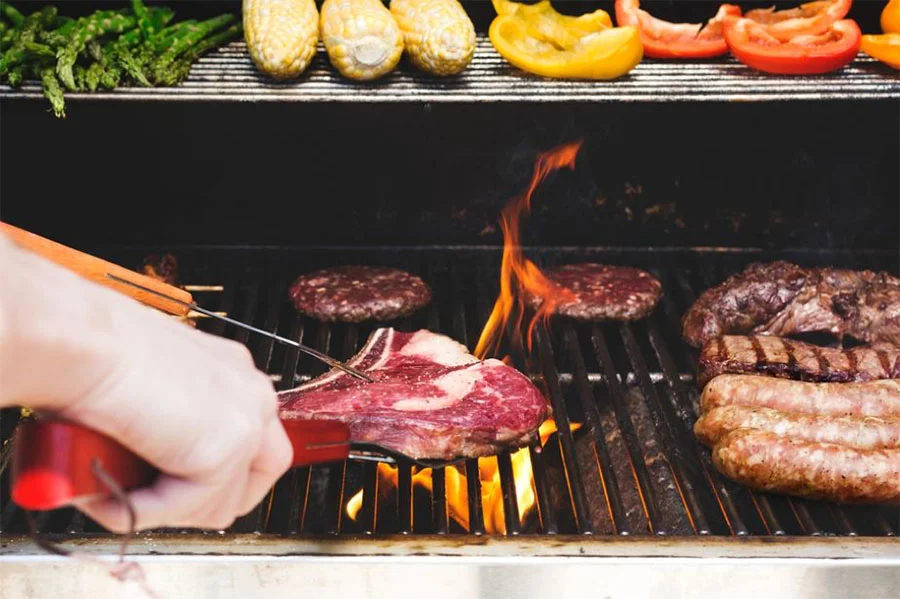BBQ Grill Maintenance
BBQ & Grill Maintenance
Your first steps to a fun and safe grilling season!
If you love cooking outdoors as much as we do, the first sign of warm weather will have you bolting to the backyard to fire up your trusty grill. However, after 5 or more months of neglect and harsh winter weather, your grill might have other ideas. That’s why we always recommend doing a maintenance check at the start of the grilling season, or whenever the grill has been dormant for a prolonged period of time, to ensure a fun and SAFE barbecuing experience.
Follow these easy steps to get your grill ready for a (hopefully) long grilling season:
1. Check for Gas Leaks
This is probably the most important step to ensure safety for yourself, family, and friends. The most common occurrences of leaks are due to either a loose connection or a faulty/damaged hose. Do NOT use a grill that has any signs of a gas leakage.
First, ensure that all connections, including the gas supply, are firmly closed. Next, using a small, clean brush, apply a 50/50 mixture of dish soap and water to the entire length of the gas hose, and all connection points. Turn on the gas supply. If there is a leak bubbles will begin to form at that point. Turn off the gas supply.
If you determine that there is a leak in the hose, have replaced it immediately. If the leak is occurring at a connection point, disconnect and reconnect the point in question, checking for damage to threads. If the threads are damaged, or the connection point continues to leak, replace the fittings.
If any piece of a leaking connection has been replaced, we recommend doing another leak test before turning the grill on.
2. Remove and Clean Burners
Each burner should be removed and cleaned. A small brush and or toothpick should be used to ensure that there are no insects or debris trapped in the tubes or small openings, as it can cause an uneven flow of gas, redirecting flames to unwanted positions.
3. Test Ignition Lighter
Do a check to ensure that the ignition lighter Is firing correctly. If not, the battery has likely been drained. Replace the battery and test again. If it still isn’t firing, it may be an issue with the electrodes. Ensure that the terminals are properly connected.
4. Wash Grill
Using warm soapy water, wash the grill thoroughly, inside and out. Be sure to dry it after to avoid leaving water marks on the surfaces.
5. Clean Grates
Special attention should be paid to cleaning the grates or any other surface that comes into direct contact with your food. Burn off any excess grease that may be on the grates, scraping them to help loosen any burnt-on bits. We recommend using a wooden scraper over a wire brush as there have been reports of the bristles making their way into people’s food and getting stuck in their throats after breaking off from the brush and getting left on the grill. After the grates cool, wash them with soapy water, dry, and apply a light coat of oil to keep them seasoned.
6. Check fuel levels
Make sure that you have enough fuel in your tank to cook the food before you invite everyone over for dinner. If your tank doesn’t have a gauge on it, you can determine its level of fullness by weighing it on a bathroom scale. Most 20 lb tanks have a tare weight of around 17 lbs, making them close to 37 lbs when full.
•••
Now go forth and get grilling! Summer only ever lasts so long…


